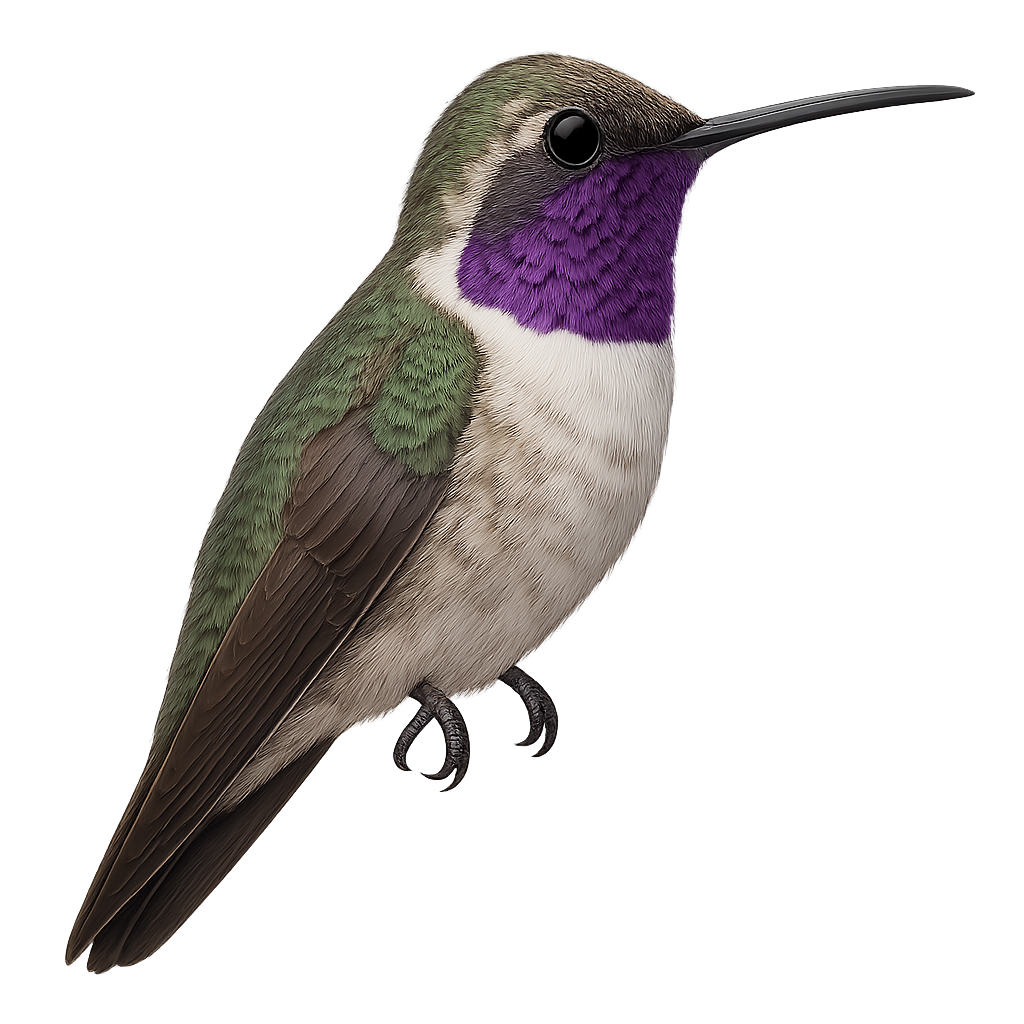Your wildlife photography guide.
Explore the beautiful sheartail in detail, study its behavior, prepare your shots.
Where to observe and photograph the beautiful sheartail in the wild
Learn where and when to spot the beautiful sheartail in the wild, how to identify the species based on distinctive features, and what natural environments it inhabits. The WildlifePhotographer app offers tailored photography tips that reflect the beautiful sheartail’s behavior, helping you capture better wildlife images. Explore the full species profile for key information including description, habitat, active periods, and approach techniques.
Beautiful Sheartail
Scientific name: Calothorax pulcher

IUCN Status: Least Concern
Family: TROCHILIDAE
Group: Birds
Sensitivity to human approach: Suspicious
Minimum approach distance: 5 m
Courtship display: March to April
Incubation: 15-18 jours
Hatchings: March to May
Habitat:
Scrublands, open forests, arid areas
Activity period :
Primarily active during the day, with peak activity in the morning and late afternoon.
Identification and description:
The Calothorax pulcher, or beautiful sheartail, is a small hummingbird known for its striking appearance and behavior. This hummingbird is distinguished by its vibrant plumage, featuring metallic green and bright pink hues, especially in males. It is primarily found in the arid and semi-arid regions of Mexico, frequenting scrublands and open forests. This hummingbird is an essential pollinator, feeding on flower nectar with its long, slender beak. It plays a crucial role in the ecosystem by aiding in cross-pollination of plants. Although generally solitary, the beautiful sheartail can be seen in small groups during the breeding season. Its aerial dance is a captivating spectacle, combining agility and speed.
Recommended lens:
400mm – adjust based on distance, desired framing (portrait or habitat), and approach conditions.
Photography tips:
To photograph the beautiful sheartail, it is advisable to use a lens of 400 mm or more to capture precise details without disturbing the bird. Approach slowly and maintain a distance of at least 5 meters to avoid startling it. The best times to observe them are early morning or late afternoon when the natural light is soft. Use a tripod to stabilize your camera and be patient, as these birds are fast and unpredictable.
The WildlifePhotographer App is coming soon!
Be the first to explore the best nature spots, track rutting seasons, log your observations, and observe more wildlife.
Already 1 430 wildlife lovers subscribed worldwide

